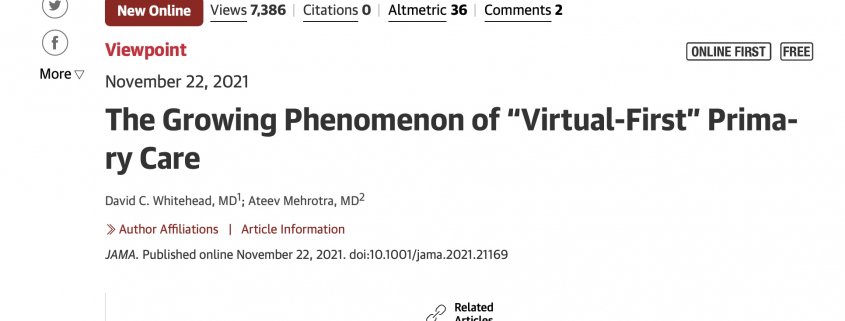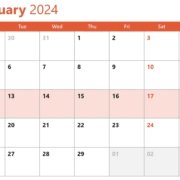“Virtual-first” Primary Care

“Virtual-First” Primary Care
A revolution among American insurers
JAMA magazine has just published (see PDF) an article on the growing phenomenon of “Virtual First” Primary Care.
It all arises when in October 2021, the United Health group announced that it was going to offer a cheaper premium with a “virtual-first primary care” plan in which subscribers would receive longitudinal care by a virtual doctor for most of their primary care needs. This announcement follows similar initiatives from other large insurers such as Humana, Aetna, and many regional plans last year. Doctor on Demand, a telecare company supports many of these plans and announced that it is in the process of recruiting more than 1,000 doctors. Firefly Health, another telemedicine company, decided to launch its own insurance plan.
This growing phenomenon follows the rise of telemedicine during the pandemic and the fact that this practice has been achieving more and more comfort among patients and doctors.
Conceptually, this “virtual-first primary care” phenomenon means that patients will use the virtual channel as the first option to obtain service.
There are several variants, such as that of MDLive, in which the doctor or other virtual professional complements the activity of the doctor who is seen in person. But patients are encouraged to use their virtual doctor, whatever the problem they have, and the expectation is that this will be used more and more frequently.
The shift towards virtual care models arises from the difficulties of maintaining face-to-face activity in chronic diseases, which require almost continuous monitoring.
Possible concerns
Despite all its advantages, virtual care in primary care raises a number of questions. The first, that although many health problems can be solved by telemedicine, the question arises as to what portion of primary care can be solved without problems in a virtual way, without personal interaction and a physical examination. The second problem is how virtual models coexist with traditional primary doctors, if there is not a very adequate coordination between them.
A robust evaluation is needed to determine if these models deliver on the promise of better chronic disease management, fewer avoidable emergency room visits, and better referrals. There are no minor issues of analyzing patient satisfaction, or the responsibility of doctors when they offer their assistance virtually.
The future will tell us
Logically, it remains to be seen if this form of care substantially attracts patients to be viable in the long term, but we are inclined to think that a wise combination of face-to-face care-virtual care, with a good protocolization of in which cases virtual care is recommended and in which cases direct care is required can be the key to success.
An opportunity also for Spanish insurers
The operation of Spanish insurers is through an endless list of specialists who are accessed directly. There is, in practice, no primary care as such. This is one of the problems for Spanish insurers and a great challenge if they want to continue advancing in cost and quality control. This is an opportunity to set up primary care, without the need for a large investment or the creation of a new network. Success may be for Spanish insurers to reproduce an experience similar to “virtual-first primary care”, without breaking direct access to the specialist, one of the great attractions of the model.









